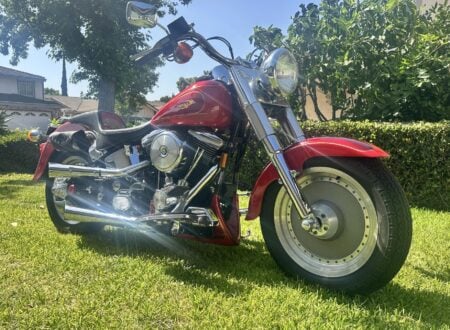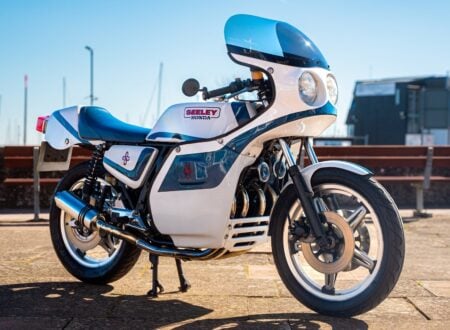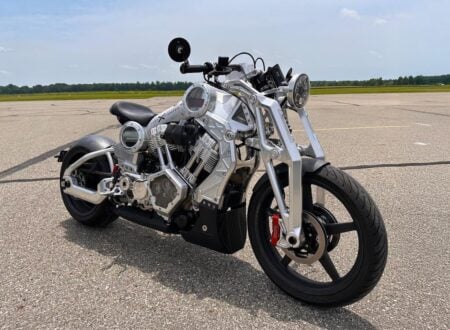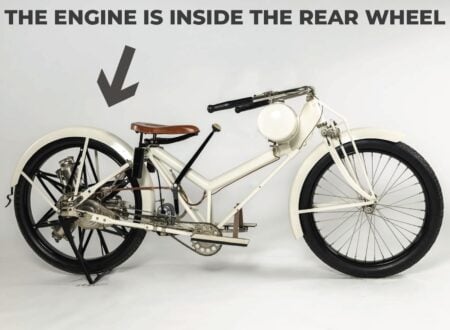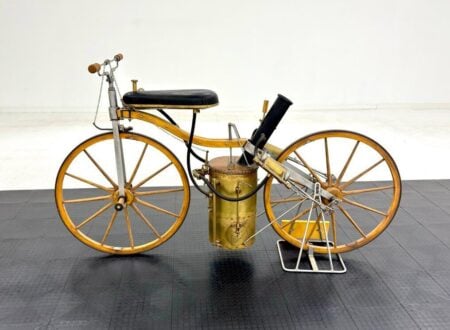This is a rare surviving example of the BMW K100RS “Hossack” from 1988 with a state-of-the-art front suspension system developed and patented by Scottish engineer and McLaren Formula 1 team veteran Norman Hossack.
Hossack’s design was an advanced double wishbone front suspension system that used upper and lower wishbones, as well as a monoshock. There can be no doubt that the design was Formula 1-derived and the German engineers at BMW liked it so much they used it in their own Duolever front suspension that debuted on the BMW K1200S – a little while after Hossack’s patents on the design expired.
Fast Facts – The BMW K100RS “Hossack”
- This is a 1988 BMW K100RS “Hossack,” it features a revolutionary front suspension system designed by engineer Norman Hossack. This double wishbone or “pivoting-link system,” using upper and lower wishbones with a monoshock, significantly improved handling and later inspired BMW’s Duolever suspension, first introduced on the K1200S in 2004.
- Norman Hossack, a Scottish engineer with roots in motorsports and Formula 1, developed his groundbreaking suspension after leaving McLaren. His system gained acclaim in the 1980s for improving motorcycle handling.
- The BMW K100RS was a high-performance sport tourer powered by a longitudinally mounted, liquid-cooled, inline-four engine. Designed to compete with Japanese superbikes, its innovative layout lowered the center of gravity and improved handling compared to BMW’s traditional R-series motorcycles.
- This Hossack-equipped 1988 BMW K100RS, with just 22,209 kilometers (~13,800 miles), is being auctioned by Bonhams on December 5th. It includes original documents, TüV approval, and features its bold 1980s paintwork, offering a rare opportunity to own a piece of motorcycling and engineering history.
The Genius Of Norman Hossack
Norman Hossack is an engineer who comes from a long line of engineers – his father was an engineer who invented new water pumping systems for use in Africa, and his grandfather developed and patented dry cell batteries all the way back in 1910.


Hossack was born in Bellshill, Scotland but grew up in Rhodesia, modern-day Zimbabwe. His father’s work had taken the family there, and so Hossack grew up exploring the wide open spaces, before discovering motorcycles. It would be a discovery that would shape the rest of his life.
His first motorcycle was a BSA Bantam with a 125cc single-cylinder engine, it wasn’t powerful or fast by any measure, but it was enough to get started with. He soon moved up to a Greeves scrambler and then to a Ducati 250 Mach 1 which he raced competitively.
He got a job as a mechanic for Rhodesian rider and Manx winner Gordon Keith. In this role he ended up at the Isle of Man TT in 1969 and then joined the motorcycle racing championship community as it moved from circuit to circuit across Britain and Europe.
It would be at this time he was spotted by a young Barry Sheene who offered him a job, but Hossack had already been hired by Bruce McLaren Motor Racing to start in 1972.
He would remain working at McLaren for the next few years including for the 1974 season when the team won both the Formula 1 Constructors’ Championship and the Indianapolis 500 in the same year. During this time Hossack was working on a number of his own side projects, including a new type of two-stroke engine inspired by the Wankel rotary engine.
Later in the 1970s he worked with legendary drivers Peter Revson and David Hobbs at the 24 Hours of Le Mans.


It would be after he left McLaren that he developed his groundbreaking motorcycle suspension system, a system that would so impress the engineers at BMW that they would use it themselves many years later.
Motorcycles with Hossack suspension systems would prove unbeatable on track, winning a slew of races in the 1980s and winning the British Single Cylinder Championship in 1986, 1987, and 1988.
Years later in the USA, Hossack would design a ground-breaking IVUS scanner, a device that is used to visualize the vessels around the heart. He also developed mountain bike suspension systems, and suspension systems for motorcycles from Ducati, Kawasaki, Honda, and Triumph.
The BMW K100RS
The motorcycle you see here is arguably the most famous type to carry Hossack’s suspension, it’s a BMW K100RS from 1988. This model was BMW’s high-performance sport tourer of the time, fitted with an advanced inline four-cylinder engine that had been developed to take on the Japanese superbikes of the era.
BMW engineers famously developed the K-series of four-cylinder motorcycles by building a prototype around an inline-four car engine to test the theory. It worked well, and the design moved forwards with an in-house developed liquid-cooled, double overhead cam alloy inline-four that was mounted longitudinally and on its side in the frame to help lower the center of gravity while reducing the width of the motorcycle.


Compared to the age-old R-series BMWs, with their horizontally-opposed, air-cooled twin-cylinder engines, the K-series was a revelation.
Many considered the BMW K100 to be one of the most advanced production motorcycles in the world at the time, so it should perhaps be no surprise that Norman Hossack chose one to develop a bolt on pivoting-link front suspension system.
This front suspension swap revolutionized the handling of the bike and it became wildly popular in Germany where it even received TüV Type approval – not an easy achievement. It wasn’t long before these Hossack BMWs came to the attention of BMW, who used a variation of the Hossack suspension design for their own Duolever front suspension system that was first used on the BMW K1200S in 2004.
The Hossack BMW K100RS Shown Here
The motorcycle you see in this article is a 1988 BMW K100RS that was fitted with Hossack pivoting-link front suspension in-period.
The bike is currently showing just 22,209 kilometers on the odometer, that’s approximately 13,800 miles. It comes with a folder of information including a manufacturer’s brochure, TüV document, assorted correspondence, a German Fahrzeugbrief (registration document), and a magazine with an article featuring the conversion.


It’s showing some discoloration on the yellow seat but the original, and rather bold 1980s-style paintwork all appears to be in generally good condition.
It’s now due to roll across the auction block with Bonhams at their Winter EU Motorcycles No Reserve Online Sale ending on the 5th of December. If you’d like to read more about it or register to bid you can visit the listing here.
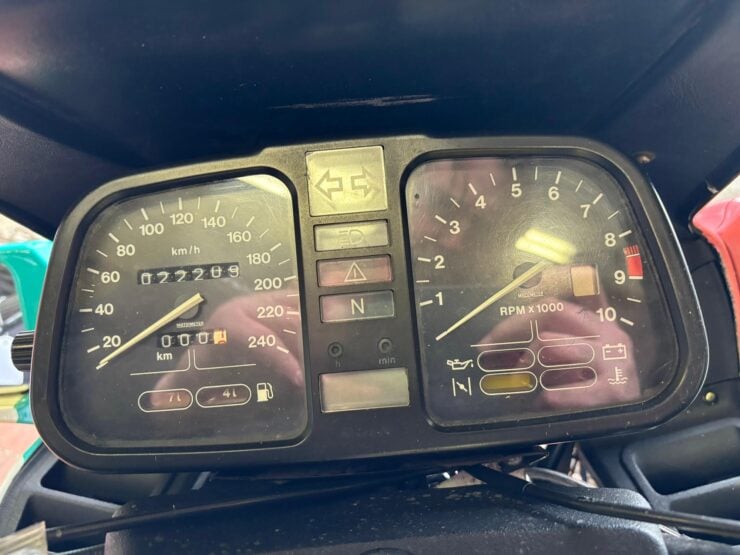


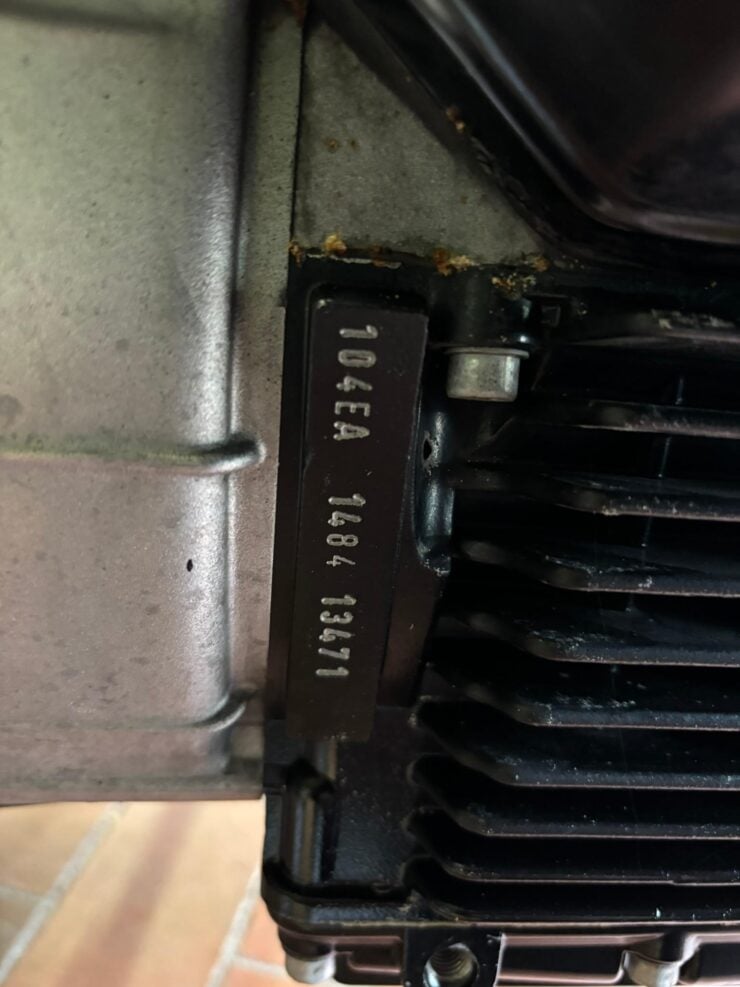
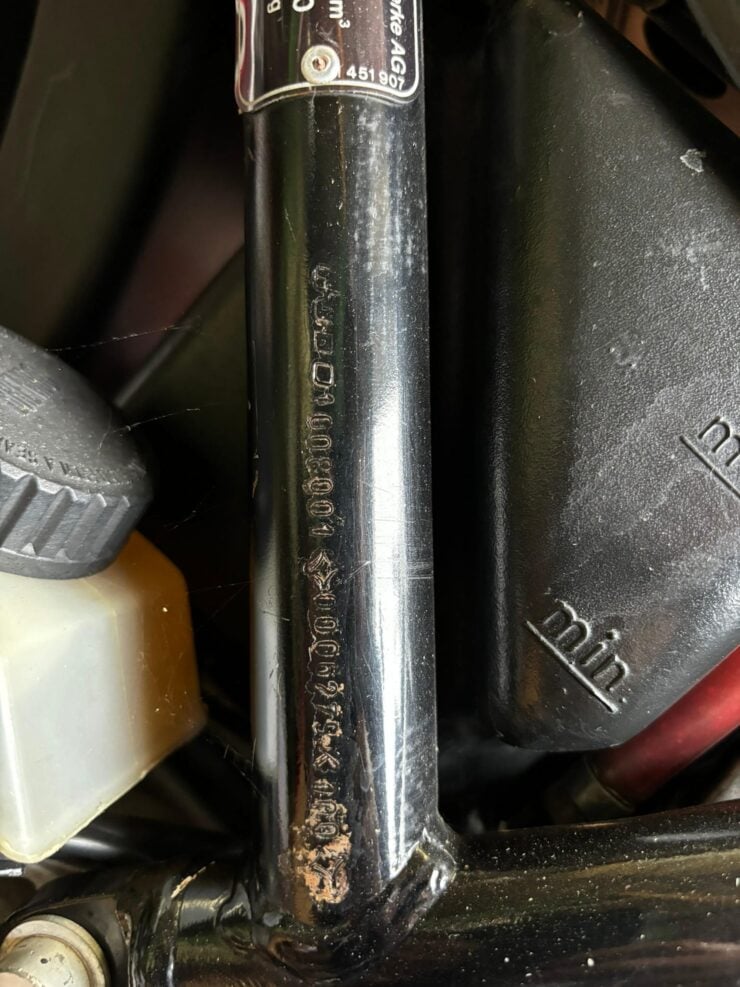
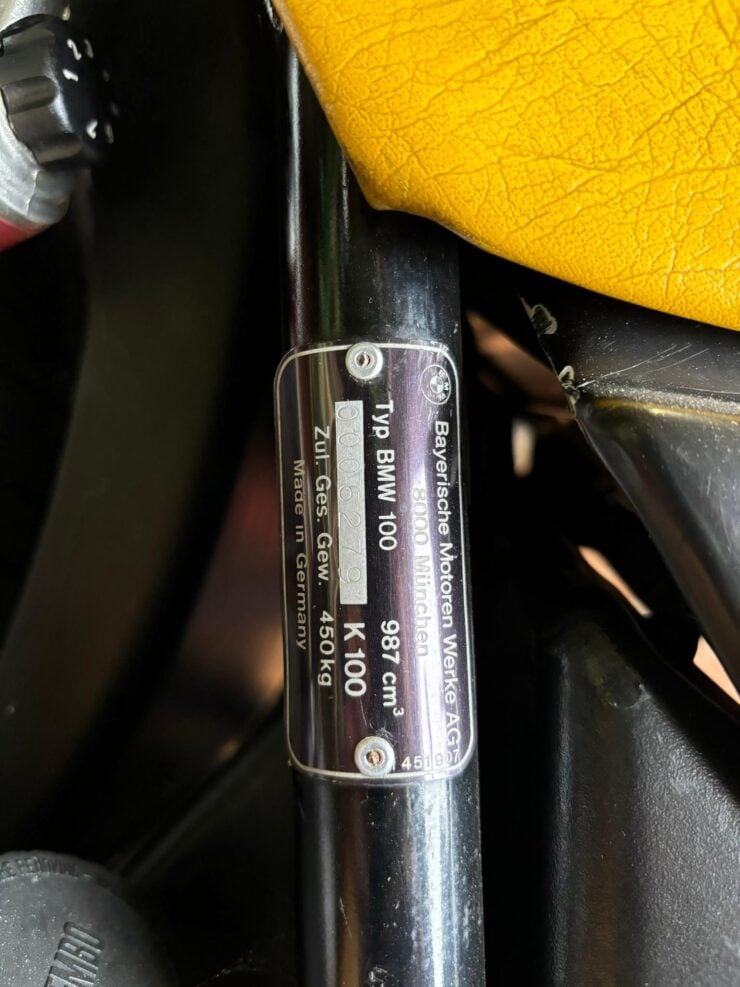
Images courtesy of Bonhams




